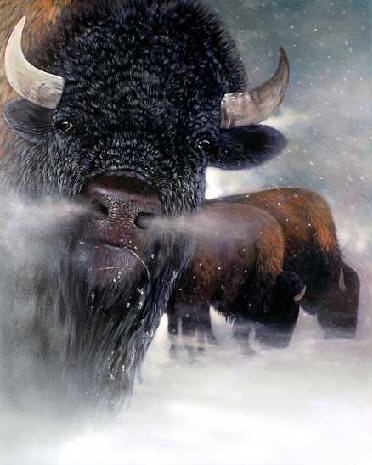Andrew Stormer (right, pretty much as shown) tells me his parents went to the farmers’ market yesterday and bought some buffalo meat.
.jpg) Stormer, a student who works with me but is spending the summer as an intern in the 38C (100F) heat of Salina, Kansas, says,
Stormer, a student who works with me but is spending the summer as an intern in the 38C (100F) heat of Salina, Kansas, says,
“The person selling the meat said that their buffalos were not fed grain and therefore, E. coli was not a concern in buffalo meat. The person also said that because E. coli did not appear in the meat that it didn’t matter if people undercooked it.”
A quick look on the Internet found that many purveyors of buffalo meat shared similar views; that somehow is doesn’t need to be sufficiently cooked to control dangerous bugs.
This sounds like a variation on a similar fantasy that shiga-toxin or verotoxin-producing E. coli like E. coli O157:H7 don’t occur in grass fed cattle. They do. And lots of other places.
Hazarika and colleagues at the Department of Veterinary Medicine, Public Health &, Hygiene, CVSc, AAU, in India reported in the Journal of Food Safety in 2005 that,
“The emergence of Verotoxin-producing Escherichia coli (VTEC) as zoonotic foodborne pathogens in recent years has become a public health concern because of its life threatening human diseases. In the present investigation, out of 87 strains of E. coli, 22 (25%) belonging to 13 different serotypes isolated from raw buffalo meat and its products were found to be verotoxic as tested by Vero cell cytotoxic assay. Serotype 026 followed by O153 and 0157 were the predominant VTEC. … VTEC in cooked buffalo meat products, namely shami kabab and kabab, appears to be a matter of concern and a potential threat to public health.”
That means handle ground buffalo like ground beef, and cook to 160F.

